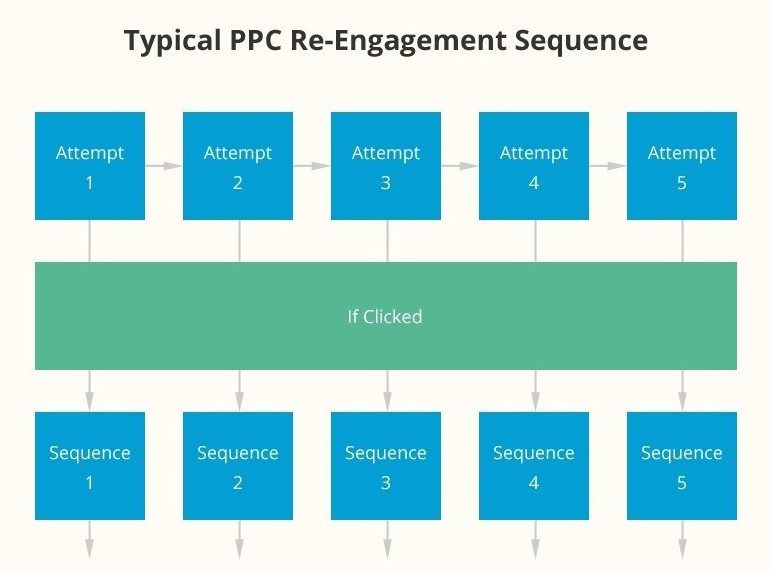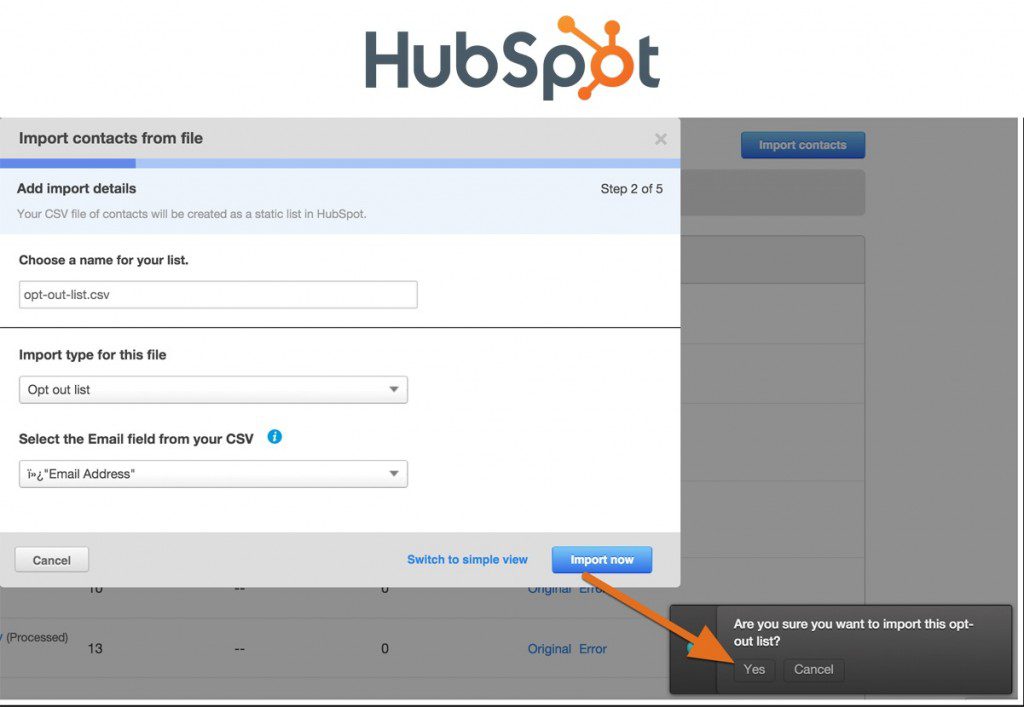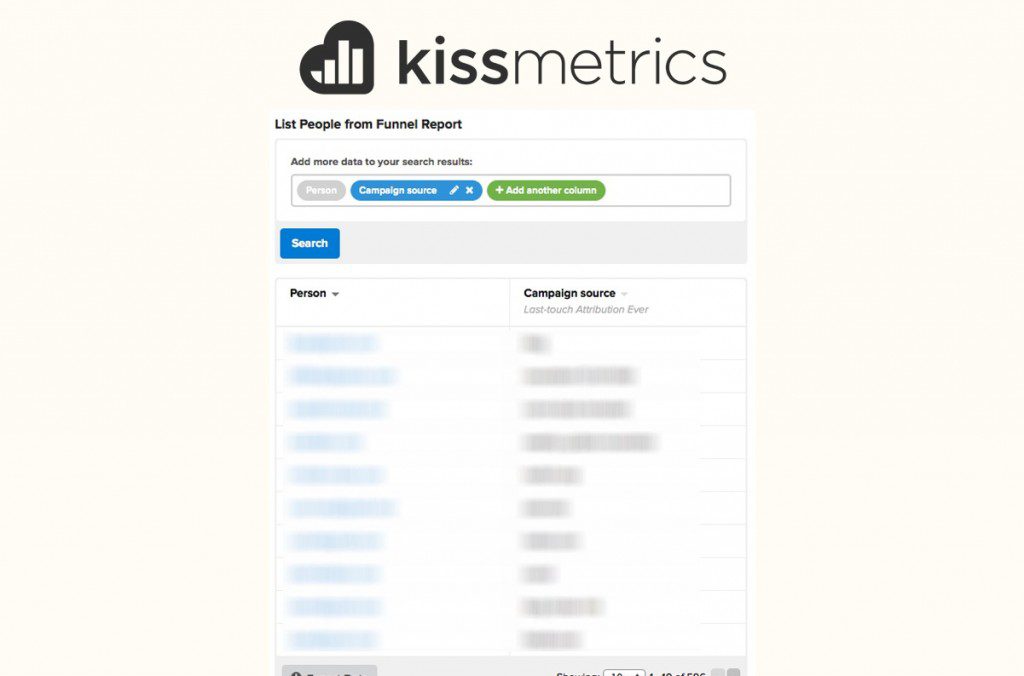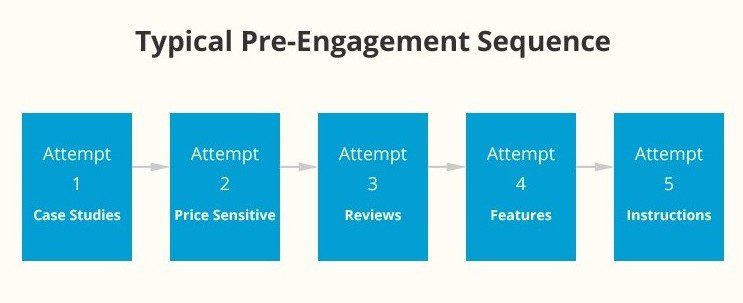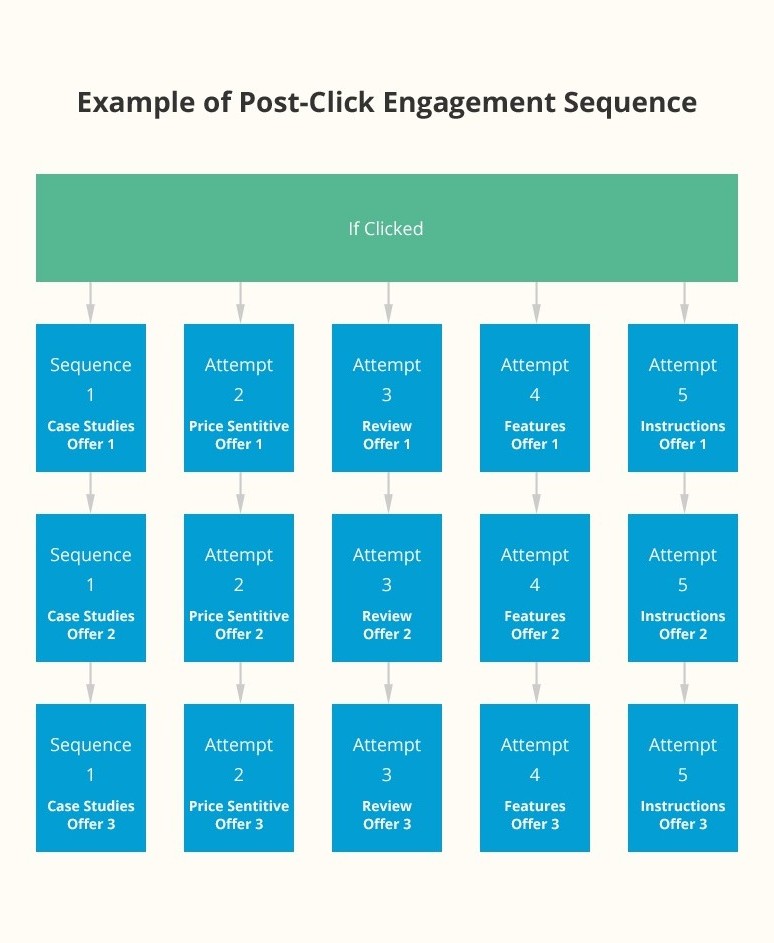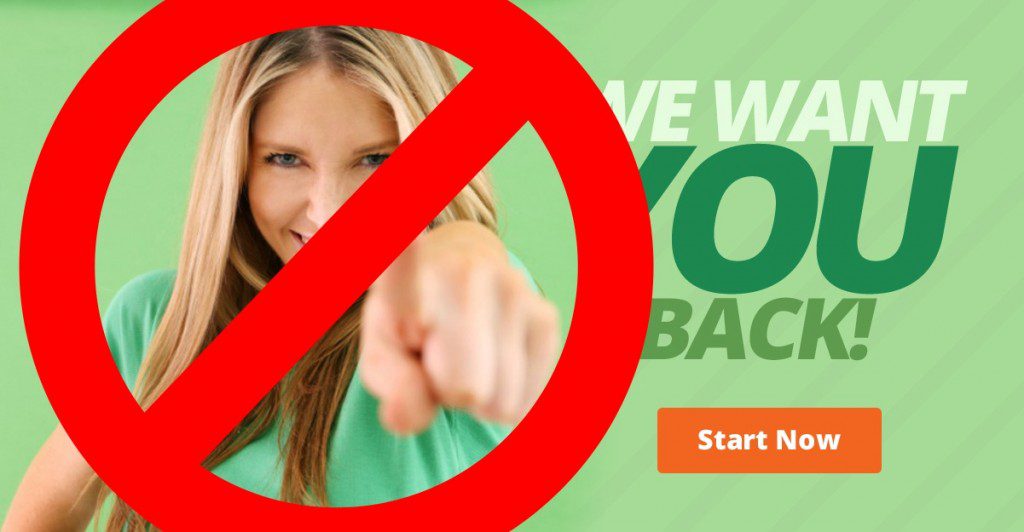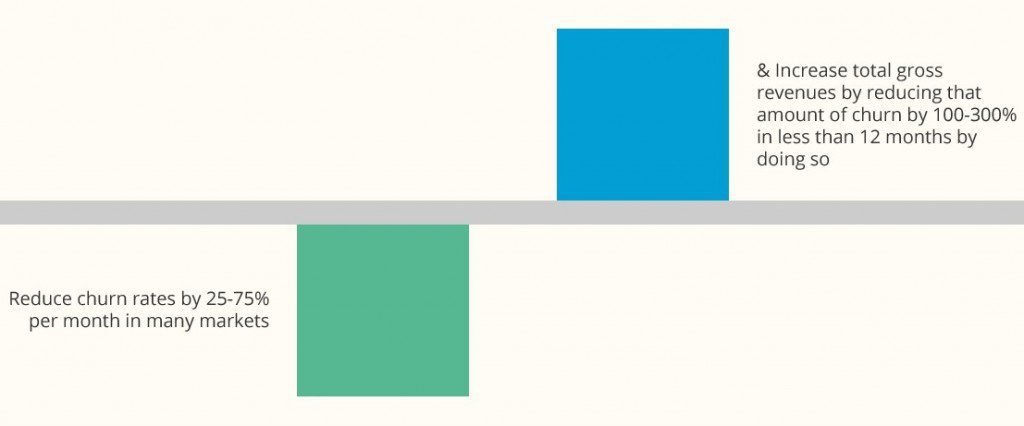If you don’t already have a system in place to attract customers or clients back to your business’s site once they have “quit” on you,
then you will be letting a whole bunch of customers needlessly head right over to your competitors as soon as they experience even the slightest bit of inconvenience and perceive a lack of understanding of their needs being met, as many of those who do leave you are doing right now.
This article is about how to use automated systems and information awareness in the first place to give you enough information to know why your customers or clients left, so you can have the actual insight necessary to prevent losing them before it’s too late to get them back.
I explain how it’s done, so you don’t have to worry about testing anything; just follow my steps here to decrease your churn rates by several points.
Why Customer Reactivation Campaigns Work So Well
Most business owners are not doing any kind of customer re-engagement to get their customers back to them at all, let alone doing it with PPC ads as discussed in this tutorial.
Because of this,
you can easily step up a customer reactivation PPC campaign to get some of your customers back using only a few PPC ads due to the sheer novelty factor and seemingly cleverness of it alone.
Seth Godin is famous for outlining that the most successful marketers are the ones doing what everyone else is NOT doing.
But as you know,
having the loudest microphone on the stage, only to do the same old things your competitors did, will simply get you the same type of bad results they got when they tried it.
For instance,
if all you tried to do is put what generic message you are using now in an email to get a customer back via a PPC campaign message,
Don’t Do This With Your Reactivation Marketing, It’s Simply Not That Effective / Compelling
then,
you will only have one chance with any one person before they’re annoyed enough to start ignoring your emails or worse, hit the spam button on you, jeopardizing the rest of your email campaigns.
You see …
There always exists a simple reason why your customers or clients leave you,
a reason you do not really understand,
so if you want to stand a chance at getting these people back to do business with you and re-earn their trust,
you will first need to figure out what the reason was when they left you in the first place before you can actually approach them again effectively and intuitively enough to seem like you actually care about more than just their money, as you already have two strikes against you before you begin this process.
THIS, my friends, is the key in making customer reactivation work for you and what will set you apart from the others who can’t make it work.
Here is what email marketers are getting doing customer reactivation; just imagine what you get with infinitely more reach!
You will see in this article just how extremely effective PPC ads can be in figuring your customers’ pain points out, so you can actually have the chance to further communicate with them.
PPC Ads Are Used to Put People Into Pre-categorized Lists for Future, More Refined Marketing
In fact, the actual cost of implementing such a campaign if done right should be absolutely TRIVIAL when set up correctly, as it works so well.
Finally Convinced You Should?
If so, let’s get started then …
Getting Started
The first thing we will do to reactivate our deactivated customer or client list is audit our list of customers for previous paid purchase activity in our CRM database.
More specifically, what we will want to gather is:
- Who did business with us
- What they bought from us
- How much revenue they generated
- How many successful transactions they made in their total lifetime
While grouping our prospects together, we will also note each of the email addresses (or phone numbers, if that is all we have) that are linked to each one, as this is the basis of targeting each with our reactivation campaign, as you will see how to do here
Figuring Out Why Each Person on Our List Left Us
As mentioned, our job as savvy technical marketers is to get all the people on our exit list to reveal exactly why they left on an individual basis, so we can work on giving them exactly what they want and do it in such a way that we can actually rebuild some trust with them.
Regardless of why you think why these people left you in the first place, your exit list prospects will very rarely tell you the real reason why they left if you ask them directly, due to issues of wanting to be non-confrontational, and is only good for figuring out in general what usually dissatisfies your customers as a whole when they leave, to improve your overall business process.
For this reason, we have to be very indirect in how we go about asking our old customers why they left, so we can get accurate enough set data to make this work.
By putting ads out there that seek to give the person most of the things they could have wanted in the first place to pique their interest based upon our exit survey data, we can find the actual thing they did want, as we watch how our prospects interact with our ads.
Disclaimer:
The ads we use here to do this are simply set up to appeal to the person who has a pain point stopping them from doing business with you. If someone has no pain point, as they already went with a competitor, let’s say, then they simply will not click any of our re-engagement ads, indicating they can be removed from our list.
User behavior data systems such as KissMetrics and Leadin from HubSpot make the data come together for you on the backend and make it possible to know who had clicked what ad and what they wanted, revealing how you can reactivate each person in your list.
These systems usually can be set up to export your lists based upon your specifications:
First Export a List of All Customer Contacts That Left You
Image Courtesy of HubSpot
From there, you can create your sublists for future marketing by appending a UTM parameter to each one of your PPC ad URLs using a UTM Tagging convention such as shown below:
www.yourcampaign.com/?utm_campaign=?
Example Key:
Campaign 1 = discount offered ad
Campaign 2 = free information offered ad
Campaign 3 = free consultation offered ad
Export a list of people who clicked on your PPC reactivation by defining your campaign source & name as defined by your UTM naming structure (Shown Above).
Image Courtesy of HubSpot
Export by Campaign in KissMetrics Is a Breeze
Image Courtesy of KissMetrics
When you are done with this process, you should be able to fill in your database from the CRM you created earlier to continue marketing to your list.
Your exported lists can alternatively be automatically fed into your social PPC campaigns using a software called Driftrock if you want to fully automate the re-engagement process. I recommend this or something similar that can provide near real-time updates to your PPC remarketing lists for best results.
Driftrock Software at www.driftrock.com
To Review:
We will first set up a PPC campaign in order to re-engage our exit customer list and gear our ad copy on our exit survey data for the first leg in the discovery campaign to first figure out what they want from us to get them back.
Example ‘Pre’-engagement Audience Segmentation Setup in Facebook
One Unique Remarketing Audience Is a Setup to Test Each Reason Why Our Customer or Client May Have Left
Then once each person on our exit list either clicks (or doesn’t click) on one of our “pain point” mitigation ads shown to them (and before they end up switching over to a competitor), we will automatically add them to the most appropriate follow-up ad campaign list they should be on for immediate follow-up communication (i.e. price too high, didn’t know how to use it, etc.) to re-close them.
Example Post ‘Re’-engagement Audience Segmentation Setup in Facebook
Once they click an ad with an offer of discount, we put them on a separate marketing list that offers periodic sales as we now know what will be able to re-engage these exact people with that type / flavor of offer.
You really do need to have an ad for every main excuse your customers or clients may give you, as you must have enough actual insight to do these type of campaigns correctly …
To give you an idea how far you need to go with this, a typical reactivation campaign will have at least five to six different ad variations in rotation for the first leg:
- Use Case Storytelling / Case Studies
- Offers of Professional Consultation
- Listing of Obscure Benefits
- Listing of Social Proof
- Listing Study Material on Proper Usage
While you can get antsy and try to get someone to become a paid customer right away without using re-engagement ads first, it is far more effective to go with a soft discovery approach first instead of simply trying to figure out why they left with your first ad only.
For all practical purposes, do not try to do a one-and-done approach, as it won’t be profitable due to an already existing lack of trust with you.
Normal Direct Response Rules Do Not Apply Here
This PPC marketing system put forth will not only decrease your churn rates while increasing your gross profits but will also improve your overall reputation, which is just a side benefit of executing this plan.
“70% of Customers Who Leave You Bad Reviews Online Without a System in Place to Detect Dissatisfaction and Deal With It Will Only Be to Receive a Response From You.”
Source: Lifelearn
If you are a SAAS company or any other type of subscription base business for that matter, you already know the importance of reducing your churn rates and its effect on your bottom line:
Source: Forentrepeurs
So why haven’t you set this up for your own business?
It can literally be the difference between making your front-end advertising campaigns work or not …
Too high of churn can stop any marketing campaign you think is working dead in its tracks.
Psychological Considerations for Your Ad Copy
From my experience, most of the common reasons why someone quits or does not buy from us is bucketed as follows, even though your list will obviously be much more specific than this to pre-qualify them:
Customer irrationality with unrealistic initial expectations — There will always be those you can never please, and you will simply forget about them.
You can easily weed them out by setting a frequency cap on your campaigns after we have ran through our list of possibilities on what may have upset or lost their attention, as they will not respond to any of our well-crafted ads.
Automatically Filter Out Those on Your List With No Interest at All With Frequency Capping
It could also be …
They initially didn’t like what they were sold after trying it for a short while — You did not deliver the value to them for lack of understanding and operational instructions.
If our customer did not understand the value of your offer after purchase, we will indeed want to re-engage these people, which we will get into later.
While Leadfeeder doesn’t do PPC re-engagement, efforts by email would surely serve better for those who did not continue with a paid membership.
Couldn’t find it as a practical solution for them and switched providers — The promise was delivered as per what the advertising stated, but the excitement wore off fast, and they just were not able to realize the value in what your company offers long term and switched.
An example here would be something that requires a great deal of effort or time to use vs. something else that was comparable, closer to them, or both comparable AND cheaper.
9% Will Switch on You When They Convince Themselves a Competitor Holds the Better Option.
Budget used elsewhere — Someone somewhere else got that person’s attention and was assigned their funds.
Simply put, your offer wasn’t the flavor of the moment and was likely forgotten, given 80 percent of Americans are living paycheck to paycheck.
For someone not fully addicted to what you offer or if you were not consistent enough in delivering your promises to your prospect in this economy, you will too often lose them.
You must be very diligent to keep delivering on your promises to your customers or clients, even after you think you have already reeled them in.
Remember, as Dan Kennedy, the undisputed king of the direct response world says: People don’t value you for what you did for them in the past more so than ask themselves what you can do for them now, and that will always be the case.
3% Will Leave You for This Loss of Attention Alone
For the rest of the people who end up leaving you …
- 1% died. Until we figure out how to cyborg ourselves, there’s not much we can do about this one.
Image Source: Fredrick Jones
- 5% switched to something else due to a friend’s recommendation. There is no more valuable referral than that from a friend. Yet if your customer is truly happy with your product or services, the odds of them leaving are slim.
Image Source: Servia Ministries
- 14% left for general dissatisfaction. Again, it’s a good idea to trim the tribe, as you’re never going to please everyone. However, if a customer leaves, make sure you did everything within reason to keep them.
Image Source: Keeping It Clean
A staggering 68% of customer loss is due to simple indifference.
Based upon these main psychological planks listed here, you will want to come up with a compelling offer that encompasses each one of these principles and ties to the real reasons you know people actually leave you, to re-engage them or get them completely off your exit list for good.
Example Reactivation Ads of Each Variety You Can Use
The Single Purchase or Short-Term Engagement Reactivation Ad — The solution or product in question didn’t meet sales hype or they were not initially impressed for whatever reason, despite having the exact problem you know your solution can actually solve.
In this case, your customer simply needs better education on how to use your solution to solve their pain point.
Customer Education – Sell the Benefits
You know they need a food supplies vendor, you just need to teach them how to get the most out of what you are actually offering.
They Liked What You Had to Offer, But Their Budget That Was Assigned to You Is Now Assigned Elsewhere — Something else was more worthy of their money and distracted them.
Remind them why they liked it
They Are the Only Ticket Seller Who Cares About the Environment, Like You!
Remind them why it’s the best in class
They may have not renewed their agreement, but you can always pull them back by reminding them what they are missing.
Offer them a discount
When in Doubt, Throw Something Like This Out There to See If Price Is a Factor
a
Planning the Second Leg of Your PPC Ad Campaign
Once someone does click one of our ads, we will then hit them with more aggressive, more specific offer or an offer related to mitigating the pain point in question in a series.
It is well documented by other PPC marketers that offers with varying levels of aggressiveness will or will not work depending on the mindset and stage of that lead (link), so this is why it is important to try different offers with varying levels of aggressiveness and perhaps add a third leg in the re-engagement campaign (or more, if you have an abnormally complicated or unusual sales cycle) to figure out the sweet spot in how aggressive you may get and how quickly you can get there.
With that said, there isn’t a way to not earn back a person’s trust if you just put enough effort in giving away good content, as I have found out, so think hard about how you can give back first to make up for the fact you messed up previously.
For Our Shorter Engaged Clients Who Need to Know Our Features to Close the Deal:
Case studies
Simple but effective — your logo and a call to action to view your client case study is all you need to “bait the click.”
Offer of Personal Consultation
You would be amazed as to how effective reaching out as an expert for productized businesses can be.
Testimonials / Reviews Make People Feel Like Part of a Group
Perfect for when someone might have not been able to measure what they got from you in the first place!
For Our Longer Engaged Clients Who Need a Reason to Act Now and Close the Deal:
A time-limited discount
This ad has everything — limited time, limited stock — and covers everything the person may have wanted, all in one ad.
Customer List Match
Now armed with our list of ads in hand and a list of people to market them to, we will grab all the email addresses associated with our sub lists (or their phone numbers, either will work) and onboard these customers to either Facebook, Twitter, or ideally both, with the initial attempt to re-engage them using our ads.
Onboarding Process – Facebook
For Uploading People to Re-engage on Facebook
Onboarding Process Twitter
For Uploading People to Re-engage on Twitter
Optimizing Your Results
As you will find out if you try this, customers who have done business with you in the past for longer will come out the other side of your PPC customer engagement sequence at a much higher rate, which should already make logical sense.
How Previous Engagement Affects Outcome on Re-Engagement Camapigns
Not only will this work overall to engage all prospects who left you at a higher rate, but the people who do come back will stay for longer than they were previously engaged, though you should still find it profitable to attempt to reactivate everyone on your list.
Not Quite Making Sufficient ROI With Customer Reactivation Ads?
For this, you can develop a much higher ROI (and limited reach) by exclusively focusing on those who spent a great deal of money with you in the past.
You also can turn any mildly profitable re-engagement sequence into a much more profitable one with a much better ad that gets a much higher click-through rate than benchmark, so don’t always be so quick to restrict your campaign reach or to target first before thoroughly testing your ads for maximum click-through and before you restrict anything else in your campaign so as not to unnecessarily limit the overall potential of the campaign before you should.
Source: Ad Expresso



